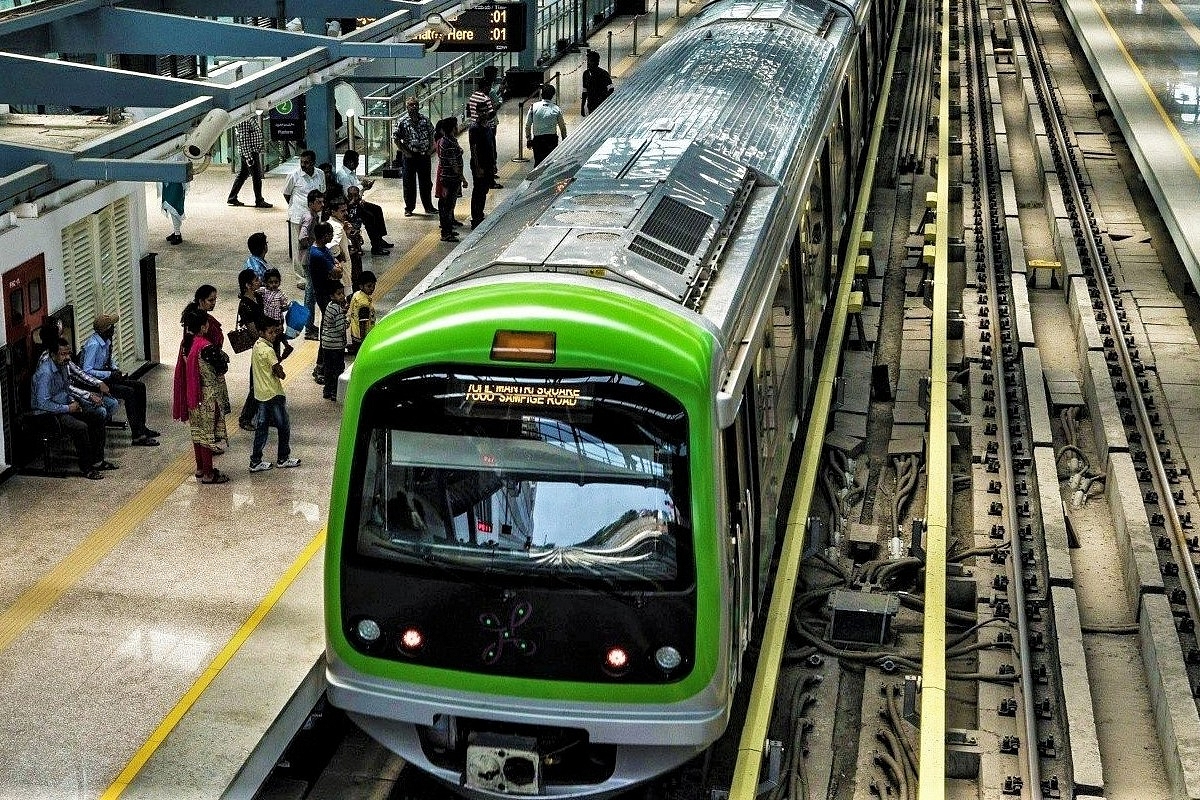Infrastructure
Alstom's LEAP Initiative Promises To Tackle Last-Mile Woes For Namma Metro

Namma Metro. (Namma Metro Bengaluru/Facebook)
In an effort to address the last-mile connectivity challenge for Bengaluru’s Namma Metro passengers, Alstom, the French transportation giant, has launched the Low Emission Access to Public Transport (LEAP) initiative.
The pilot phase of the programme will have 12 e-autos at both Yelachenahalli and Indiranagar stations, catering to commuters within a 4-km radius of each station.
In a bid to promote gender inclusion in urban mobility, MetroRide, an AI-powered electric vehicle ride-hailing solution for daily commuters, has trained around 25 women drivers to operate the electric rickshaws in the designated area.
Bengaluru, known for its intense traffic congestion, boasts of the highest number of private cars in India. Despite the significant expansion of the metro service, a recent survey conducted by World Resources Institute (WRI) India uncovered that 70 per cent of commuters are discouraged by the inadequate last-mile connectivity to the Bengaluru Metro.
Women, constituting only a fraction of metro commuters, face additional challenges due to unsafe or inconvenient last-mile connections and chronic underrepresentation in the male-dominated transport workforce.
Backed by WRI India, LEAP, a programme initiated as part of Alstom's corporate social responsibility effort, seeks to tackle these challenges. This programme is expected to soon cover other metro stations, that will help provide connectivity to high-frequency hubs.
India's metro networks have a critical last-mile connectivity gap. According to a 2023 WRI India report, poor access (last-mile connectivity) to metro rail systems in India has contributed to lower-than-planned ridership, causing the underutilisation of over $25 billion investments in the sector.
Unfortunately, the lack of high-quality last-mile infrastructure and service provision has created a paradox: a high-quality metro rail system hampered by poor access. This disincentivises existing users from continuing with the metro and deters potential users from switching to the metro.
Although better last-mile connectivity to the metro has been prioritised across multiple policies since 2017, the situation has not significantly improved. However, the latest attempt in Namma Metro could serve as a beacon of progress in addressing this issue.
Support Swarajya's 50 Ground Reports Project & Sponsor A Story
Every general election Swarajya does a 50 ground reports project.
Aimed only at serious readers and those who appreciate the nuances of political undercurrents, the project provides a sense of India's electoral landscape. As you know, these reports are produced after considerable investment of travel, time and effort on the ground.
This time too we've kicked off the project in style and have covered over 30 constituencies already. If you're someone who appreciates such work and have enjoyed our coverage please consider sponsoring a ground report for just Rs 2999 to Rs 19,999 - it goes a long way in helping us produce more quality reportage.
You can also back this project by becoming a subscriber for as little as Rs 999 - so do click on this links and choose a plan that suits you and back us.
Click below to contribute.
Latest